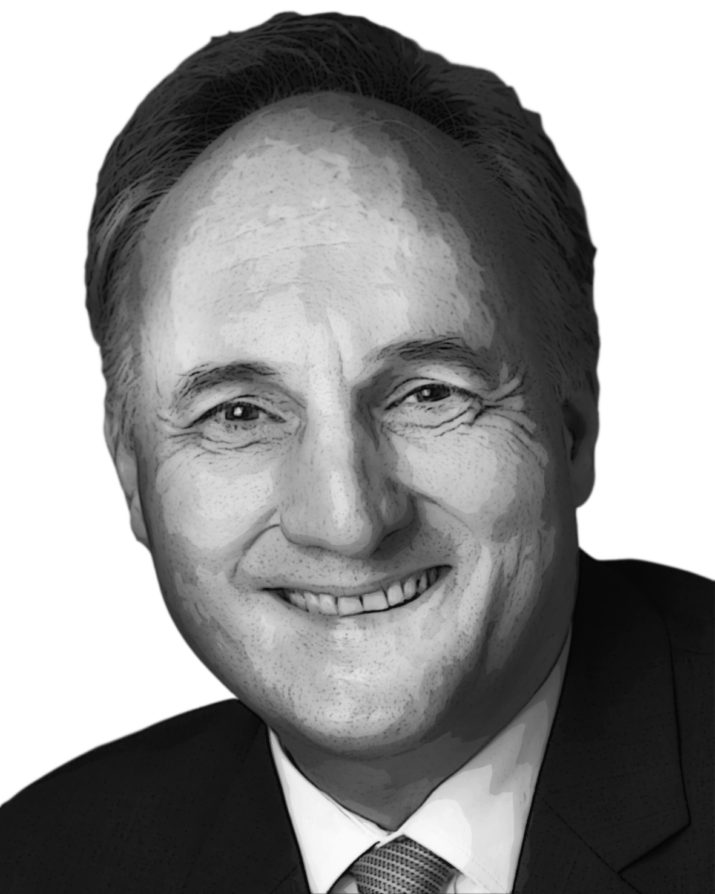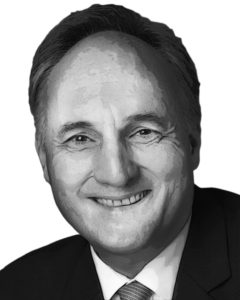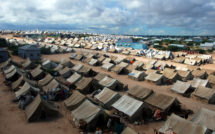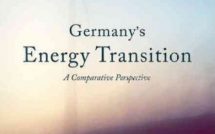
An Existential Question of Terrestrial Habitability and Human Survivability: An Interview with Peter Droege

This is part of our special feature on Sustainability & Innovation.
Peter Droege is acknowledged as one of the world’s foremost pioneers on the development of international urban sustainability and the creation of intelligent cities. His years of dedication, challenging complacency with innovative thinking on critical environmental concerns have stimulated tangible and highly successful results globally. He was instrumental in precedent-setting sustainable energy, settlement design, and urban development efforts in Australia, China, Japan, Indonesia, the United Arab Emirates, the United States, and Vietnam.
Professor Droege is the award-winning author of many path-breaking works on city futures, resilience, regenerative design, energy, and climate, including his seminal work, The Renewable City: A Comprehensive Guide to an Urban Revolution (2006).
He is deeply committed as an educator, policy expert, and activist to supporting those, who in his words, seek to “liberate human civilization from its fossil fuel drip and to defeating the Sword of Damocles that is nuclear energy.”
Droege has recently expanded the scope of his work to consider and implement regional and global ecological strategies to refine footprint measurement and enhance energy reduction. For his recent European project “Lake Constance Energy Region,” Droege initiated and led an EU-funded five-university, four-country urban, and regional energy autonomy study, focused on a transition to renewable energy and mobility based on local resources. The results were published as the “Regenerative Region: Energy and Climate Atlas.”
In this interview, Droege provides an informed exhortation about the role of cities, about what he believes is the urgency and feasibility of attaining “100% Renewable Energy.”
—Sherman Teichman for EuropeNow
EuropeNow What do you think is the biggest challenge of our times?
Peter Droege Failed investment. Over a trillion dollars in fossil and nuclear energy subsidies, and a good portion of the two trillion dollars in global military budgets dedicated to protecting petroleum sources and markets, are essentially applied to make Earth uninhabitable to humans, as quickly and effectively as possible. Sadly, the project of ending life on earth is working.
Yet never has a path of emergency response been clearer. To a growing community around the world, the answer is to end reliance on fossil and nuclear energy and embrace 100% renewable resources: we at the Liechtenstein Institute for Strategic Development teach what we practice and we practice what we preach. And at Eurosolar we have promoted this path since our inception in 1988. Yet today, in 2017, progress is still lagging so far behind that we have to even go beyond 100% renewable.
EuropeNow What does 100% renewable energy mean, and what does “beyond” signify?
Peter Droege It means absolute zero fossil or nuclear fuel content in operational or embodied energy, in stationary use or transport. “Beyond” refers to the urgent need to boost the removal of free greenhouse gas from the atmosphere, by enhancing the ability of soils, forests, wetlands, and water bodies to sequester and manage carbon dioxide and other greenhouse gases. “Beyond” also means the need for cities and communities to improve efficiency, lower consumption, and increase renewable energy production to generate an excess of non-polluting power for parts of the community and economy that need it to escape the fossil fuel trap. Above all, “beyond” means focus on poverty reduction, health, education, and social empowerment at the very base of the global society without which an energy transformation would at best be incomplete.
EuropeNow Is this a dream, or can it be reality?
Peter Droege Given global dependence on conventional fuels this may seem to many to be a utopian aim. Indeed, when “100%” is used today it describes specific and narrowly defined examples of abstinence from non-renewable fuel. 100% renewable electricity, for example; or 100% solar thermal heat; or fully renewable building operational energy, based on a high degree of design and construction efficiency. But there is nothing utopian about the ultimate goal: cities can use these individual 100% aims and partial strategies to (over time and in parallel) assemble a fully renewable reality. This is a far more direct and transparent approach than the largely symbolic and partial target setting exercises of the past.
EuropeNow Why set a 100% target?
Peter Droege Only an absolute and unequivocal renewable energy target can help in the guidance of urban strategies. Ideally, this will cover all electricity and thermal consumption, transport energy—and also include consumed energy, embodied in the goods and services procured. Most fractional target setting exercises— say, a reduction of 20% by 2020— today are aimed at the direct use of emissions derived from operational energy only.
This approach is problematic because the targets are typically set arbitrarily and for political purposes; they are set too low, even when they are attached to a specific implementation commitment; and they cover only a small fraction of actual energy consumption. Household energy embodied and consumed in goods and services comprises some 60-70% of total energy use— while the smaller rest, direct and transport energy use is typically elevated to represent the “total” energy use in municipal statistics. Lifestyle and personal consumption of imported fossil energy embodied in consumed goods and services are typically ignored: this can blow out the energy budget of an inner-city dweller to twice that of a rural citizen existing at a lower living cost.
EuropeNow How can excess greenhouse gas be removed from the atmosphere?
Peter Droege The fostering of climate-stabilizing regions is the most advanced frontier of renewable city planning and development. Many industries pride themselves on fostering carbon sink projects in Amazonia and other distant places, as short-term attempts at making up for their fossil fuel addictions— the emissions trading regime was based on this idea. In principle this is aimed at good and beneficial outcomes, although continued reliance on fossil fuel emissions makes it an unsustainable model.
What about our own regional and local ecosystems? How can they become “carbon negative” –capable of absorbing emissions? Land use planning, open space, and waterway management, forestry and agriculture practices are relevant to the carbon and nitrogen cycle, and usually involve methane, a powerful greenhouse gas. But also construction materials are important: wood, biochar, and also carbon fiber, properly produced, can store atmospheric carbon in cities.
EuropeNow Where is the limit of what cities can do?
Peter Droege Some cities can more easily manage the energy performance of their own building stock, while others see themselves also able to control private and commercial building or even industrial activities. The nature of the local car fleet depends on global automobile suppliers and a typically large share of commuters or through-traffic from elsewhere—and yet, larger cities and city-regional alliances in partnership with new and post-carbon transport businesses and services can work to make substantial improvements over time. This includes efficiency programs, renewably powered electric public transport, renewable cogeneration plants, transformation of the building stock, urban energy infrastructure upgrades and regional wind, wave/tidal and solar farms to power electric vehicles—and, last not least, massive support for autonomous and traditional people driven car-share initiatives.
EuropeNow What must national governments do to support the turn from fossil and nuclear to renewable cities?
Peter Droege National governments do not need to embrace new urban policies—they just have to not stand in the way of progress, i.e. not engage in policies that harm cities’ quest for 100% renewable status—remove fossil fuel subsidies at the national level; embrace renewable energy feed-in legislation, the most powerful and proven path to quick and market based local renewable energy uptake; and enact legislation supporting renewable energy geared storage and network systems at regional and national levels for stationary and transport use, to supplement urban efforts.
EuropeNow This sounds like far more than a green sustainability drive.
Peter Droege This is an emergency. As a bare minimum, and first step, National Renewable Energy Emergency Frameworks should be formed to assess conditions and propose effective and timely urban agendas and funding programs.
U.S. federal agencies from FEMA to the CIA have long known that renewable energy is a basic ingredient of any resilience strategy—whether in terms of national defense or climate change: distributed renewable energy also resists attack and systemic collapse. Emergency Presidential, prime ministerial or other cross- or inter-ministerial bodies need to be established at national levels to monitor, prompt and enable. Local and state-based city-oriented governance structures are to be supported and boosted in this effort.
Unlike the broad urban social and development agendas of the second half of the twentieth century, today’s needs lie in the urgent building of urban renewable energy infrastructures, in efficiency improvement programs, and in the crafting of regional development efforts for the resilient supply of central cities with energy and food crops, as well as ecosystem goods and services: flood control, ambient heat mitigation, and cyclical water management.
EuropeNow How would you formulate a guide to local 100% and beyond, as an optimistic vision?
Peter Droege People come to realize that the most hopeful vision for cities is to become fully renewable energy based. Energy-intelligent building design, bio-energy, wind, water, solar electricity, solar thermal, and geothermal sources can support a leaner and healthier, but also more prosperous and equitable urban civilization. But these compelling arguments are only a diplomatic aside: time has run out; what may have been a quaint call for “sustainability” today has become a rude wake-up call to face the existential question of urban and human survivability.
There is no real alternative to a path that offers this exceptional combination of effectively mitigating the root causes of climate change, lowering urban vulnerability to the effects of climate change and conventional fuel peaking, reducing local and global environmental pollution levels, improving human health, and slowing the depletion of natural resources, freshwater and minerals, and halting and reversing the catastrophic collapse in biodiversity if this is even possible.
A locally appropriate range of renewable energy systems and an abiding focus on efficiency and demand management can meet all human energy needs anywhere on this planet. Independent energy islands can coexist with smart power grids and distributed storage systems—mechanical, electric, chemical or thermal. Such energy storage takes the form of fixed infrastructure but is also mobile: vehicle based. In this way the various energy sectors power, thermal energy, storage, and mobility can be coupled, networked and in the electric domain even traded via blockchain technology, inaugurating an entirely new and people-oriented, prosperity building energy economy.
EuropeNow What are the development benefits of a renewable path?
Peter Droege The local, regional, and global health benefits of “going renewable” are abundantly documented in human and ecological health and systemic stability. But because of the inherent potential for cities to generate and manage their own energy supply, there is also the great potential to liberate and internalize an extraordinary financial income stream—the enormous funds currently exiting and draining communities to fund oil exploration and processing, sustain distant coal mines and uranium quarries, and shore up the fragile balance sheets of astronomically risky and costly nuclear power plants.
By investing this massive monetary stream into renewable power systems, reduced demand through efficiency and conservation and regional and a range of renewable sources external to the city boundaries. And here, in the localization and regionalization of basic resource reliance and in the capturing of local economic value just may lie the future of cities.
EuropeNow What are some of the successful, hopeful examples?
Peter Droege The great total community renewable energy autonomy veteran of Guessing in Austria, but also the geothermally endowed Reijkjavik, current civic leader Vancouver, led by Gregor Robertson since 2008 as 39th mayor, the first major 100% renewable Australian urban center of Canberra / the Australian Capital Territories (ACT), Burlington VT and Aspen CO in the United States, even Davos, Switzerland—to name just a few, all serve as models for good practice, and have shown various important initiatives and civic leadership over the years. The aspiration has grown over the years as well, although these champions are still in the minority.
More than half of Germany’s national territory is said to be covered by cities, towns, and regions aspiring to be what we call “energy autonomous.” Indeed, cities have powerful reasons to enhance the quality, strength, and depth of their governance responsibilities, and to boldly expand their influence as energy leaders. Pioneering examples for this new role, often successfully supplementing existing policies and programs—or even spawning new state and national initiatives and partnerships, include the cities of Barcelona and its famed solar ordinance innovation of some twenty years ago, and San Francisco’s wide range of measures, from issuing solar bonds to finance public solar installations, to its erstwhile arrangement with the now defunct Better Place alliance of companies, to implement private renewable-energy based e-mobility systems throughout the greater Bay Area.
Key to this is strong civic and administrative leadership, like San Francisco’s long line of committed mayors—was epitomized in then-pioneers like Gavin Newsom, the 42nd mayor of the city and current and more embattled Lieutenant Governor of California. Newsom also had rallied the support of neighboring cities Oakland and San José in partnering with the then active commercial renewable electric car initiative Better Place, a predecessor of Tesla, and pursued regional food production and urban gardening initiatives, mapping unused spaces from rooftops to surplus public land. Today, these initiatives are eclipsed by the efforts of a number of other cities but continue the by now historical struggle towards urban energy autonomy. It is also no coincidence that San Francisco, like others, also recently decided to maintain its Sanctuary City status against the threat of losing Federal funding for protecting migrants and their families.
Peter Droege is a renowned expert in urban design and development, renewable energy, energy autonomy research and development and urban energy transition strategies. He holds a number of influential and international development designs and strategies, as well as advanced energy research and policy positions. His academic background includes the Massachusetts Institute of Technology (School of Architecture and Planning), Tokyo University (Endowed Chair Program, Research Center for Advanced Science and Technology) and the University of Sydney. He is the CEO of Liechtenstein Institute for Strategic Development, the President of Eurosolar, European Association for Renewable Energy, and a General Chairman for World Council for Renewable Energy.
Sherman Teichman is a Senior Fellow at the Carr Center for Human Rights Policy at Harvard University’s Kennedy School of Government; Research Associate at the Centre for International Studies’ Department of Politics and International Relations, at the University of Oxford; and Founding Director Emeritus Institute for Global Leadership (1985-2016) at Tufts University.
Photo: Peter Droege, Private
See the links below for more of Peter Droege’s works:
Droege, P. Ed. 2014. Regenerative Region – energy and climate atlas. Oekom Publishers
Droege, P. Ed. 2008. Urban Energy Transition – from fossil fuels to renewable power. Elsevier
Droege, P. 2009/2011. 100% Renewable – energy autonomy in action. Earthscan / Routledge
Droege, P. 2008. Renewable City – a comprehensive guide to an urban revolution. Wiley
Droege, P. 2010. Climate Design. ORO Publications
Published on June 6, 2017.




